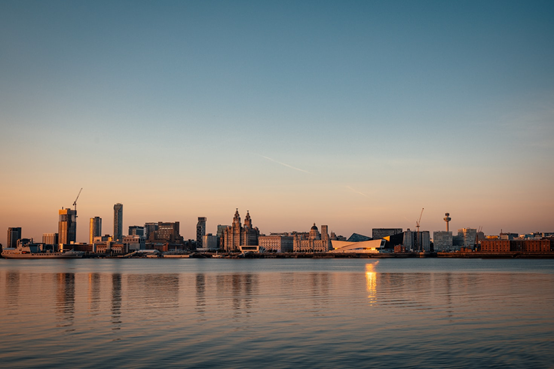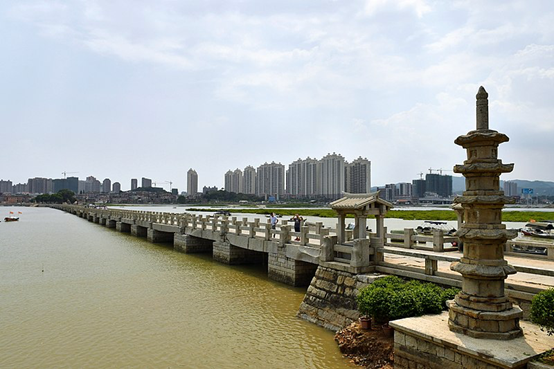Tianchen Dai, Carola Hein
In July 2021, the world lost and gained a heritage site connected to a port city. The 44th session of the World Heritage Committee held in Fuzhou, China, decided to delete Liverpool’s ‘Maritime Mercantile City’ and to add Quanzhou’s ‘Emporium of the World in Song-Yuan China’ to UNESCO’s World Heritage List. These major changes in the heritage status of two port-city sites illustrate the particular challenges and opportunities that port-city heritage sites are facing today as they try to find ways to balance maritime heritage conservation and various developments of port and city.
Port-city spaces are designed for transshipment, storage and labor. Because of their specific scale and function, they are not easily given (new) life today. This raises the question how port city communities can generate new functions to preserve historic structures, and capitalize on maritime culture and identity of port cities, while at the same time facilitating sustainable development for the region.
The case of Liverpool demonstrates this struggle between conservation and development. The port did not benefit from the introduction of the container in the 1960s, and the consequent decrease in port activities brought wider economic decline. Since the 1990s, the city has regarded the regeneration of the historical waterfront as an important part of economic recovery. In 2004, six areas in the historic center and docklands in the city of Liverpool were listed as UNESCO heritage sites. The Outstanding Universal Values (OUV) was formulated on the basis of innovative technologies and methods in dock construction and port management, making it an outstanding example of a mercantile port city representing the early development of global trading and cultural connections throughout the British Empire.
UNESCO video of Liverpool’s Mercantile Maritime City from 2013, also paying attention to Liverpool’s role in slave trade and the city’s attempts to come to terms with it.
Like many other port cities, Liverpool has been faced with what is often considered a binary choice ‘between maintaining heritage status or regenerating left-behind communities - and the wealth of jobs and opportunities that come with it’ (Rotheram, 2021). Developed as the heart of the British Empire and geared to maximum performance, the large site of 20 million square feet needed to find new functions. Museumization of the site couldn’t fulfill the multiple goals of development set by the city: bringing land and buildings into effective use; encouraging the development of existing and new industry and commerce; creating an attractive environment and ensuring that housing and social facilities are available to encourage people to live and work in the area (S136 Local Government Planning and Land Act 1980). In 2012, the Liverpool City Council granted planning permission for a development scheme at the World Heritage site. A £5 billion regeneration scheme entitled ‘Liverpool Waters’ aimed to completely transform the city’s northern docks, creating a mixed-use waterfront, purportedly bringing life back to the historic docklands. Extending to over 2 kilometers along the banks of the River Mersey, this scheme has a planning permission for 20 million square feet of mixed use development floor space across 60 hectares (Liverpool Waters, 2021).

The World Heritage Committee perceived this action of granting planning permission as detrimental to the site’s authenticity and integrity. It decided to move the sites to the “List of World Heritage in Danger”, also in 2012 (World Heritage Committee, 2012). Nine years later, Liverpool lost its world heritage status at the end of July, 2021, due to ‘irreversible loss of attributes conveying the outstanding universal value of the property’. The last straw was the plan for a new football stadium.
On the other side of the world, the ancient port of Quanzhou showcases another solution of preserving port heritage. A brief comparison between the case of Quanzhou and Liverpool is shown in Table 1.
Table 1. A brief comparison between the heritage case of Quanzhou and Liverpool
Quanzhou gained its World Heritage status a few days after the revocation of Liverpool’s status. Located at the southeast coast of China, Quanzhou was the fulcrum of East and Southeast Asia that functioned as an engine for the trade across the vast expanses of maritime Asia during the 10th-14th centuries. It also functioned as a window for the exchanges and interactions of Song-Yuan China and the outside world. Hence, Song-Yuan Quanzhou presented a prosperous picture and symbolic relationship among ports, city and hinterland. The sites encompasses religious buildings, including the 11th century AD Qingjing Mosque, one of the earliest Islamic edifices in China and an icon of global exchange, and a wide range of archaeological remains, such as administrative buildings, stone docks and sites of ceramic and iron production (https://whc.unesco.org/en/list/1561/). These sites and their settings comprehensively reflect the distinguishing maritime trade structure and the multi-cultural social structure of Song-Yuan Quanzhou. The sites are inscribed under the Criterion (ii), (iii) and (iv), which emphasize that the urban landscape formed in Song- and Yuan-era, blending Chinese and foreign styles, and exhibits an interchange of economic and cultural development concepts between the agriculture of east Asian empire and maritime commercial civilization. The listed properties provide a full picture of a maritime trade system successfully implemented during that time.
The serial property and its component parts in Quanzhou demonstrate a high degree of integrity and authenticity. The high integrity and authenticity of the serial property can be attributed to the termination of the port function in Quanzhou in the early Ming Dynasty. Around 1374-1384, the Chinese government promulgated a ban on maritime trade to prevent pirates. This ban had led to the decline of maritime traffic starting from Quanzhou. The port in Quanzhou, the starting point of the maritime silk road in China, was finally abandoned in the late 15th century. Ever since the abandonment of the port, the urban development of Quanzhou had been at a rather slow pace until China entered the economic reform period in 1977.

In the Quanzhou City Master Plan (2008 - 2030), the local government identifies the city as one of the most strategically important cities in the economic zone along the west bank of Taiwan Strait: besides being a national historical and cultural city, it is a port city economically powered by modern industry and trade. The construction of the Donghai administrative center in the north of the city is conducted to gradually take over the administrative functions of the old city and further protect the old city, where most of the maritime heritage sites are located (Quanzhou Evening News, 2010).
This approach shows Liverpool and Quanzhou’s fundamentally different approaches to the conservation of historical docklands. The city of Liverpool is using the historic site as a backdrop and space for economic regeneration, aiming at transforming the historical waterfront into a Commercial Business District of the city. The regeneration is more about the urban area than the historical port. Conversely, Quanzhou has not been using the historical port and city since the late 15th century. The city chose not to physically transform the old town, but to create new urban centers away from the historical center to maintain the authenticity and integrity of the heritage properties. The historical center is now mainly developed as a tourism area.
It is not easy for heritage practitioners and port city planners to conceptualize a mutually agreed solution for merging heritage preservation and sustainable development. Each port city needs their own strategies based on their local context. Some port cities are already working hard on integrating national and transnational heritage requirements with local innovations towards sustainable development. For instance, the State, the Municipality and the local community of Bordeaux collectively revised the “Plan for Safeguarding and Development of Bordeaux (started in 2010) which aimed to highlight Bordeaux’s capacity for innovation and adaptation of French heritage policies and tools concerning sustainable development (Appendino, 2017).
The cases of Liverpool and Quangzhou illustrate the duality between urban quality and heritage protection and enhancement. In order to balance and achieve the multiple goals of environmental conservation, economic development, urban attractiveness, green mobility, social equity, and energetic renovation, it is crucial to take local political, social, cultural and economic contexts into account. The 2021 decision shows that cities need to make an effort to facilitate communication between stakeholders in historical port cities for establishing urban plans and schemes that integrate heritage conservation into urban planning and development - rather than seeing them as two separate things.
Acknowledgement
This blog has been written in the context of discussions in the LDE PortCityFutures team. It reflects the evolving thoughts among group members on the socio-spatial and cultural questions surrounding port city relationships. The blog was edited by Hilde Sennema.
References
Appendino, F. (2017). Balancing Heritage Conservation and Sustainable Development – The Case of Bordeaux. IOP Conference Series: Materials Science and Engineering, 245, 062002. 10.1088/1757-899x/245/6/062002
Liverpool Waters. (2021). THIS IS LIVERPOOL WATERS. Retrieved 28th July, 2021, from https://liverpoolwaters.co.uk/
Quanzhou Evening News. (2010). Interpretation of Quanzhou City Master Plan (2008 - 2030) Quanzhou Municipal Natural Resources and Planning Bureau.
Rotheram, S. (2021, Jul 23, 2021). Liverpool removed from UNESCO world heritage list; know why? TIMESOFINDIA.COM. Retrieved from https://timesofindia.indiatimes.com/travel/travel-news/liverpool-removed-from-unesco-world-heritage-list-know-why/as84667020.cms
The People's Republic of China. (2020). Quanzhou: Emporium of the World in Song-Yuan China - Revised Dossier. China: National Cultural Heritage Administration of the People's Republic of China.
World Heritage Committee. (2012). Convention Concerning the Protection of The World Cultural and Natural Heritage, Thirty-sixth session Saint Petersburg, Russian Federation: UNESCO.
World Heritage Committee. Description of Liverpool Maritime Mercantile City. https://whc.unesco.org/en/list/1150/
